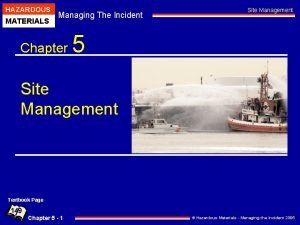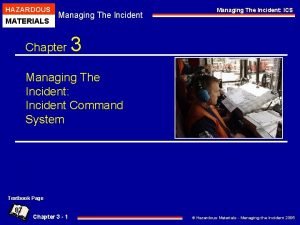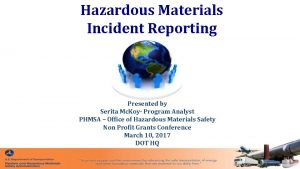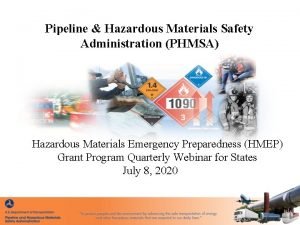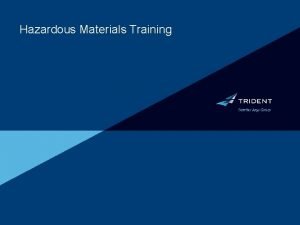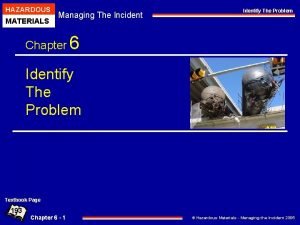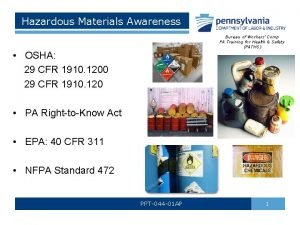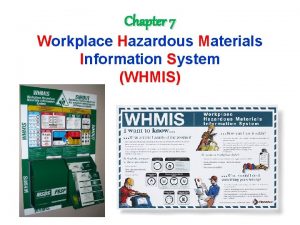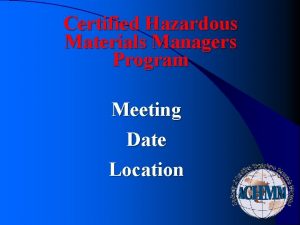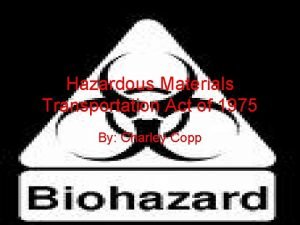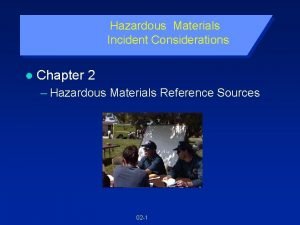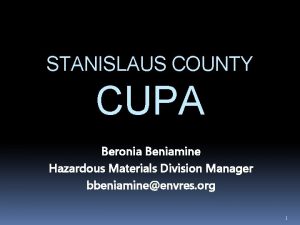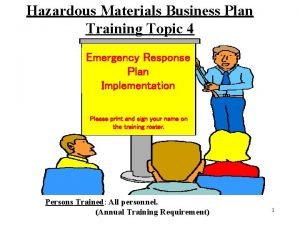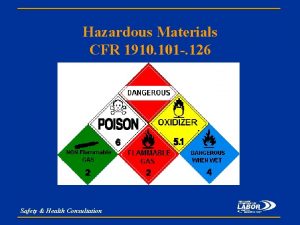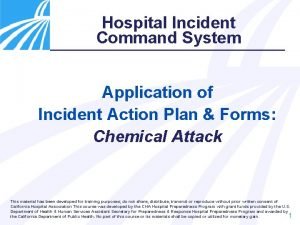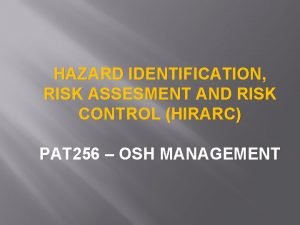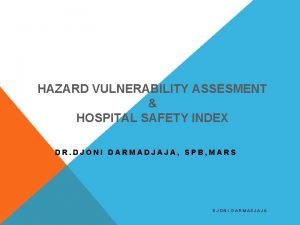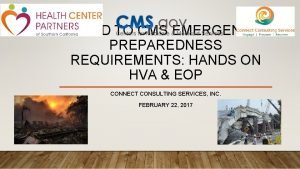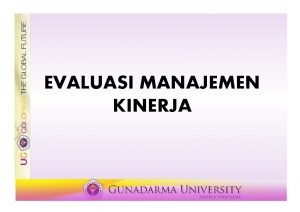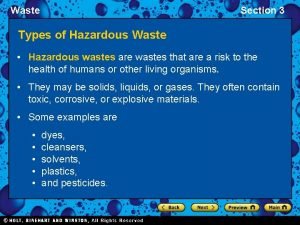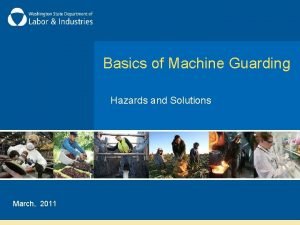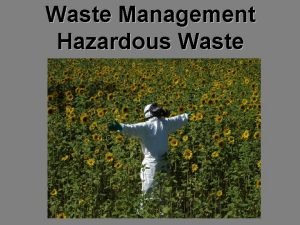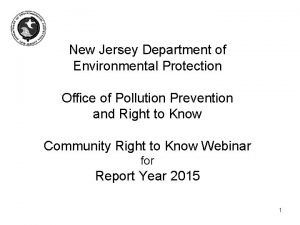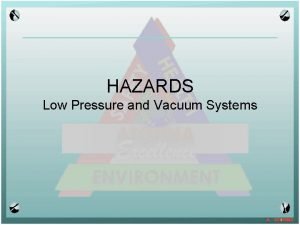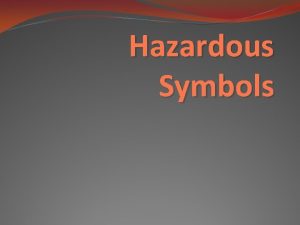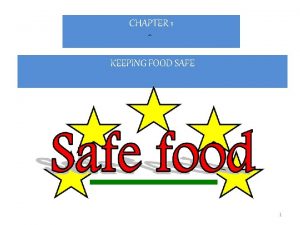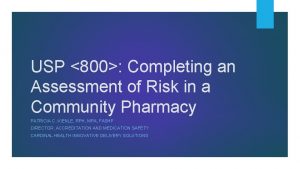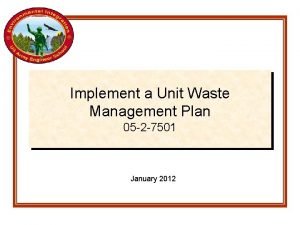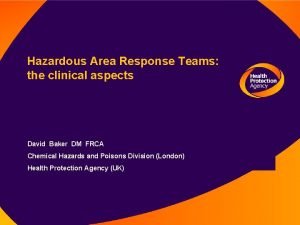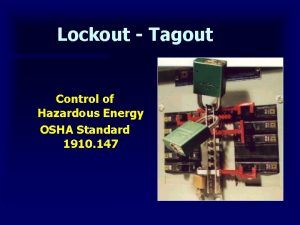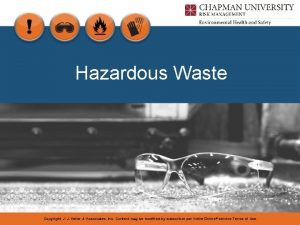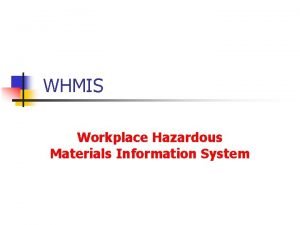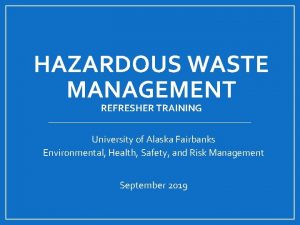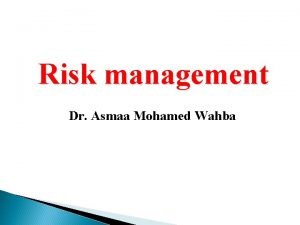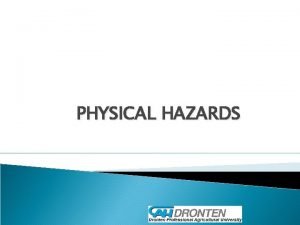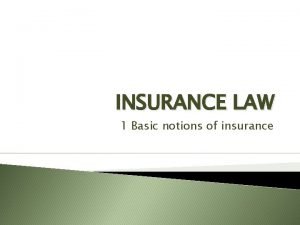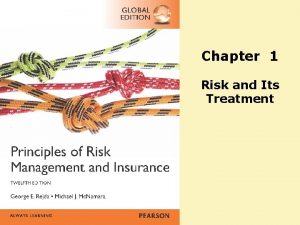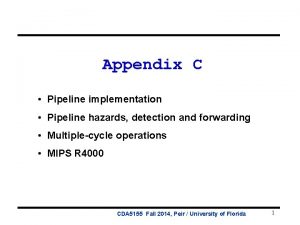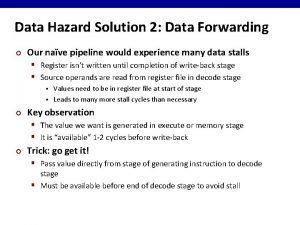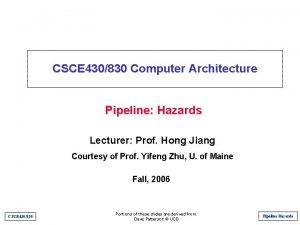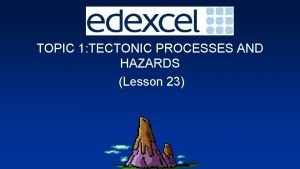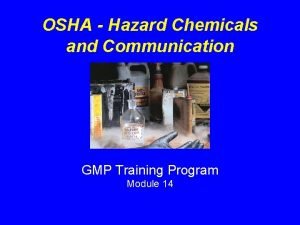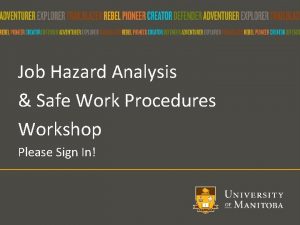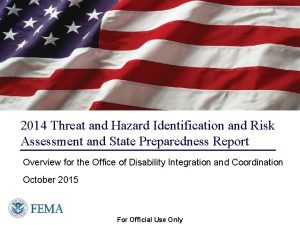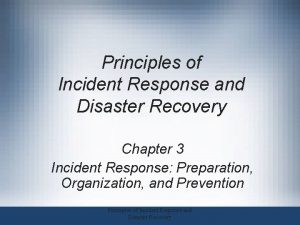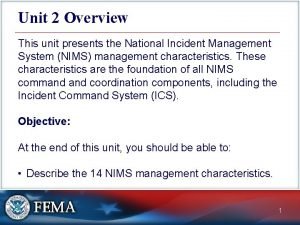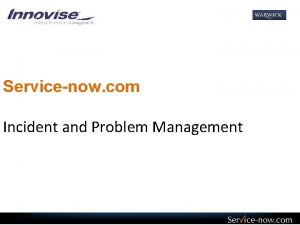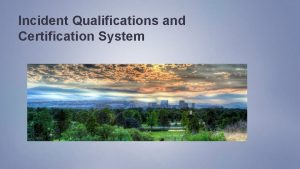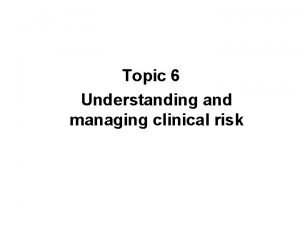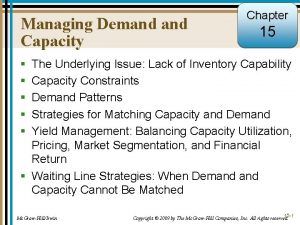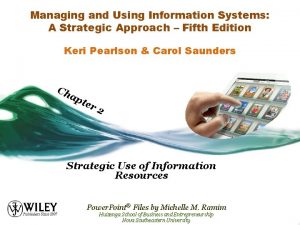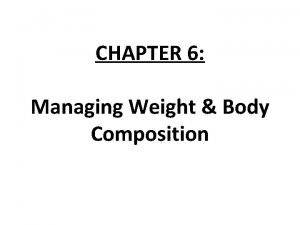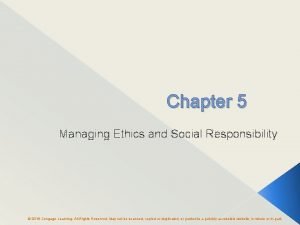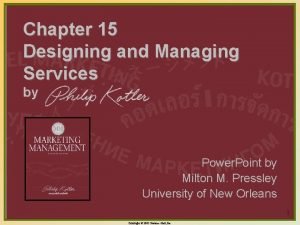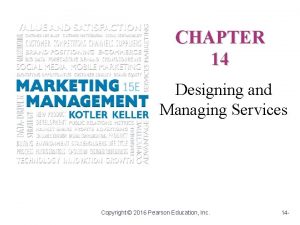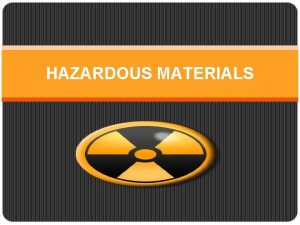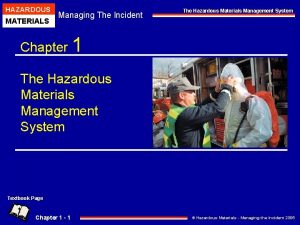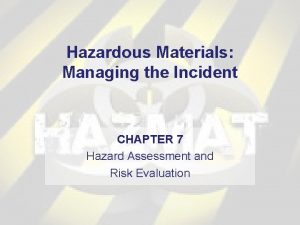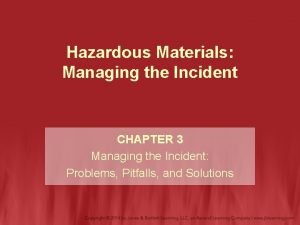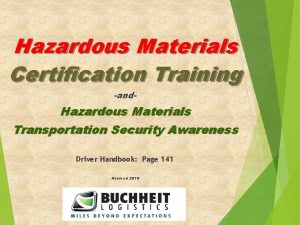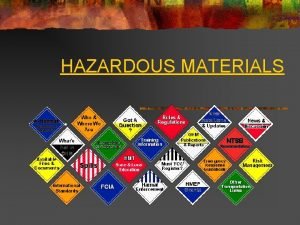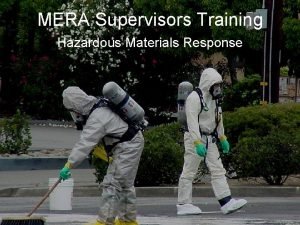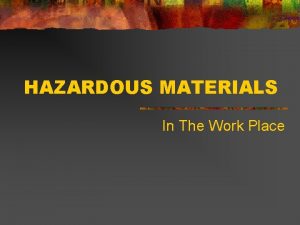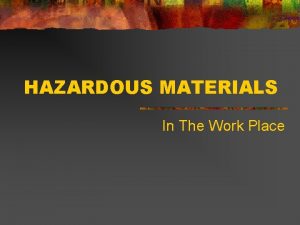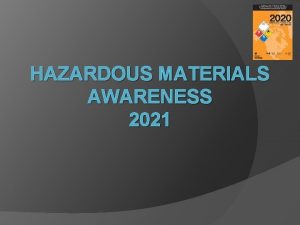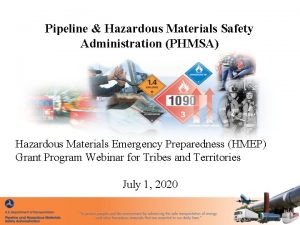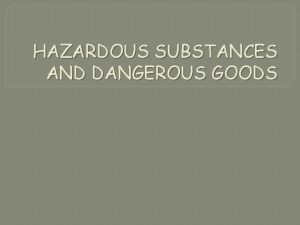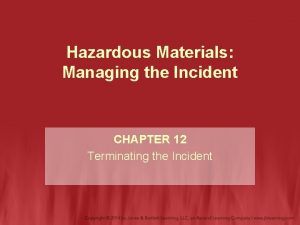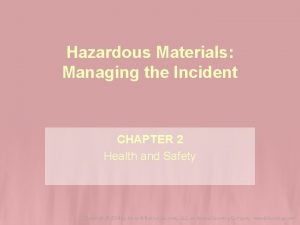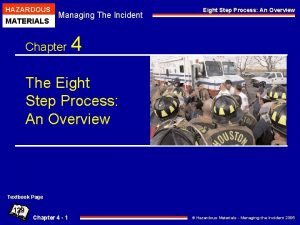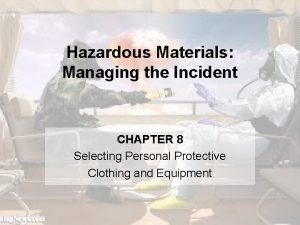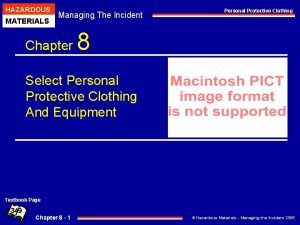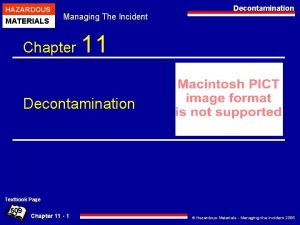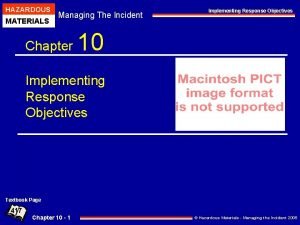HAZARDOUS MATERIALS Managing The Incident Hazard Assessment And

















































































































































- Slides: 145

HAZARDOUS MATERIALS Managing The Incident Hazard Assessment And Risk Evaluation 7 CHAPTER Hazard Assessment And Risk Evaluation Textbook Page 265 Chapter 7 - 1 © Hazardous Materials - Managing the Incident 2005

HAZARDOUS MATERIALS Managing The Incident Hazard Assessment And Risk Evaluation Objectives • • • Describe The Concept Of Hazard Assessment And Risk Evaluation. Describe The Following Terms And Explain Their Significance In The Risk Assessment Process [NFPA 472 - 6. 2. 2(b)]. Describe The Heat Transfer Processes That Occur As A Result Of A Cryogenic Liquid Spill [NFPA 472 -6. 2. 2(c)]. Chapter 7 - 2 © Hazardous Materials - Managing the Incident 2005

HAZARDOUS MATERIALS Managing The Incident Hazard Assessment And Risk Evaluation Objectives • Identify And Interpret The Types Of Hazard And Response Information Available From Each Of The Following Resources, And Explain The Advantages And Disadvantages Of Each Resource [NFPA 472 -6. 2. 2(a)]. • • • Hazardous Materials Databases Maps And Diagrams Monitoring Equipment Reference Manuals Technical Information Centers Technical Information Specialists Chapter 7 - 3 © Hazardous Materials - Managing the Incident 2005

HAZARDOUS MATERIALS Managing The Incident Hazard Assessment And Risk Evaluation Objectives • • Identify The Steps In An Analysis Process For Identifying Unknown Solid And Liquid Materials [NFPA 472 -6. 2. 1. 3(a)]. Identify The Steps In An Analysis Process For Identifying An Unknown Atmosphere [NFPA 4726. 2. 1. 3(b)]. Chapter 7 - 4 © Hazardous Materials - Managing the Incident 2005

HAZARDOUS MATERIALS Managing The Incident Hazard Assessment And Risk Evaluation Objectives • Identify The Types Of Monitoring Equipment, Test Strips, And Reagents Used To Determine The Following Hazards [NFPA 472 -6. 2. 1. 3(c)]: • • • Corrosivity Flammability Oxidation Potential Oxygen Deficiency Radioactivitiy Toxic Levels Chapter 7 - 5 © Hazardous Materials - Managing the Incident 2005

HAZARDOUS MATERIALS Managing The Incident Hazard Assessment And Risk Evaluation Objectives • Identify The Capabilities And Limiting Factors Associated With The Selection And Use Of The Following Monitoring Equipment, Test Strips, And Reagents [NFPA 472 -6. 2. 1. 3(d)]: • • Carbon Monoxide Meter Colorimetric Tubes Combustible Gas Indicator Oxygen Meter Passive Dosimeter Photoionization Detector Ph Indicators And/Or Ph Meters Radiation Detection And Measurement Instruments Chapter 7 - 6 © Hazardous Materials - Managing the Incident 2005

HAZARDOUS MATERIALS Managing The Incident Hazard Assessment And Risk Evaluation Objectives • • • Describe The Basic Identification Tools And Detection Devices For Each Of The Following [NFPA 472 -6. 2. 1. 1(g)]: • • • Reagants Test Strips Nerve Agents Vesicants (Blister Agents) Biological Agents And Toxins Irritants (Riot Control Agents) Identify Two Methods For Determining The Pressure In Bulk Packaging Or Facility Containers [NFPA 4726. 2. 2(f)]. Chapter 7 - 7 © Hazardous Materials - Managing the Incident 2005

HAZARDOUS MATERIALS Managing The Incident Hazard Assessment And Risk Evaluation Objectives • • Identify One Method For Determining The Amount Of Lading Remaining In Damaged Bulk Packaging Or Facility Containers [NFPA 472 -6. 2. 2(g)]. Identify And Describe The Components Of The General Hazardous Materials Behavior Model (GEBMO). Identify The Types Of Damage That A Pressure Container Could Incur [NFPA 472 -6. 2. 3. 4]. Identify At Least Three Resources Available That Indicate The Effects Of Mixing Various Hazardous Materials [NFPA 472 - 6. 2. 4. 1]. Chapter 7 - 8 © Hazardous Materials - Managing the Incident 2005

HAZARDOUS MATERIALS Managing The Incident Hazard Assessment And Risk Evaluation Objectives • • • Identify The Steps For Determining The Extent Of The Physical, Safety, And Health Hazards Within The Endangered Area Of A Hazardous Materials Incident [NFPA 472 -6. 2. 5. 2]. Identify Two Methods For Predicting The Areas Of Potential Harm Within The Endangered Area Of A Hazardous Materials Incident [NFPA 4726. 2. 5. 2(c)]. Describe The Steps For Estimating The Outcomes Within An Endangered Area At A Hazardous Materials Incident [NFPA 472 -6. 2. 5. 3]. Chapter 7 - 9 © Hazardous Materials - Managing the Incident 2005

HAZARDOUS MATERIALS Managing The Incident Hazard Assessment And Risk Evaluation Objectives • • • Describe The Steps For Determining Response Objectives (Defensive, Offensive, And Nonintervention) Given An Analysis Of A Hazardous Materials Incident. [NFPA 472 -6. 3. 1. 2]. Identify The Possible Action Options To Accomplish A Given Response Objective [NFPA 472 - 6. 3. 2. 2]. Describe The Factors That Influence The Underground Movement Of Hazardous Materials In Soil And Through Groundwater. Chapter 7 - 10 © Hazardous Materials - Managing the Incident 2005

HAZARDOUS MATERIALS Managing The Incident Hazard Assessment And Risk Evaluation Objectives • Identify The Hazards Associated With The Movement Of Hazardous Materials In The Following Types Of Sewer Collection Systems: • • Storm Sewers Sanitary Sewers Combination Sewers List Five Site Safety Procedures For Handling An Emergency Involving A Hydrocarbon Spill Into A Sewer Collection System. Chapter 7 - 11 © Hazardous Materials - Managing the Incident 2005

HAZARDOUS MATERIALS Managing The Incident Hazard Assessment And Risk Evaluation Introduction • The Evaluation Of Hazard Information And The Assessment Of Risks Is The Most Critical Decisionmaking Point In The Successful Management Of A Hazardous Materials Incident. • The Chapter Is Based On The Premise That Responders Have • Successfully Implemented Site Management Procedures • Identified The Nature Of The Problem And The Materials Potentially Involved. Chapter 7 - 12 © Hazardous Materials - Managing the Incident 2005

HAZARDOUS MATERIALS Managing The Incident Hazard Assessment And Risk Evaluation Introduction • Topics Include: • Understanding Hazardous Materials Behavior • Outlining The Common Sources Of Hazard Information • Evaluating Risks • Determining Response Objectives Chapter 7 - 13 © Hazardous Materials - Managing the Incident 2005

HAZARDOUS MATERIALS Managing The Incident Hazard Assessment And Risk Evaluation Basic Principles • The Concept Of Hazard And Risk Evaluation Is Recognized As A Critical Benchmark In Safe And Successful Emergency Response Operations • If We Review Incidents And Case Studies Where Emergency Responders Have Been Injured Or Killed, In Most Instances It Is Not Due To Their Failure To Assess And Understand The Hazard • In Contrast, One Of The Most Common Root Causes Is Our Failure To Adequately Evaluate And Understand The Level Of Risk Involved Chapter 7 - 14 © Hazardous Materials - Managing the Incident 2005

HAZARDOUS MATERIALS Managing The Incident Hazard Assessment And Risk Evaluation What Are Hazards And Risks? • Hazards Refer To A Danger Or Peril. In Hazardous Materials Response Operations, Hazards Generally Refer To The Physical And Chemical Properties Of A Material. • Risks Refer To The Probability Of Suffering Harm Or Loss. Risks Can’t Be Determined From Books Or Pulled From Computerized Data Bases — They Are Those Intangibles That Are Different At Every Hazmat Incident And Must Be Evaluated By A Knowledgeable Incident Commander. Chapter 7 - 15 © Hazardous Materials - Managing the Incident 2005

HAZARDOUS MATERIALS Managing The Incident Hazard Assessment And Risk Evaluation What Are Hazards And Risks? • Risk Levels Are Variable And Change From Incident To Incident. Factors That Influence The Level Of Risk Include The Following: • Hazardous Nature Of The Material(s) Involved. • Quantity Of The Material Involved. • Containment System And Type Of Stress Applied To The Container. • Proximity Of Exposures. • Level Of Available Resources. Chapter 7 - 16 © Hazardous Materials - Managing the Incident 2005

HAZARDOUS MATERIALS Managing The Incident Hazard Assessment And Risk Evaluation What Are Hazards And Risks? • In This Chapter, The Hazard And Risk Evaluation Process Will Be Viewed As Three Distinct Yet Inter-related Tasks: • Hazard Assessment • Risk Evaluation • Development Of The IAP 272 Chapter 7 - 17 © Hazardous Materials - Managing the Incident 2005

HAZARDOUS MATERIALS Managing The Incident Hazard Assessment And Risk Evaluation Physical And Chemical Properties • To Evaluate Risks Effectively, Responders Must Be Able To Identify And Verify The Materials Involved, And Determine Their Hazards And Behavior Characteristics. • To Mount A Safe And Effective Hazmat Response, Responders Must Understand • How The Enemy Will Behave (I. E. , Its Physical Properties) • How It Can Harm (I. E. , Its Chemical Properties). • In This Section We Review The Key Physical And Chemical Properties Of Hazardous Materials And Their Role In The Risk Assessment Process. Chapter 7 - 18 © Hazardous Materials - Managing the Incident 2005

HAZARDOUS MATERIALS Managing The Incident Hazard Assessment And Risk Evaluation General Chemical Terms And Definitions • The Following Terms Are Commonly Found On a MSDS And In Various Emergency Response References As Part Of A Material’s Description Or Basic Chemical Make-up. • • • Element Compound Mixture Solution Slurry Cryogenic Liquid Chapter 7 - 19 © Hazardous Materials - Managing the Incident 2005

HAZARDOUS MATERIALS Managing The Incident Hazard Assessment And Risk Evaluation General Chemical Terms And Definitions • Ionic Bonding • Covalent Bonding • Organic Materials • Inorganic Materials • Hydrocarbons • Saturated Hydrocarbons • Unsaturated Hydrocarbons 6 • Aromatic Hydrocarbons • Halogenated Hydrocarbons Chapter 7 - 20 © Hazardous Materials - Managing the Incident 2005

HAZARDOUS MATERIALS Hazard Assessment And Risk Evaluation Managing The Incident Physical Properties • Physical Properties Provide Information On The Behavior Of A Material. • • Normal Physical State Poison 6 Temperature Of Product Specific Gravity Vapor Density Boiling Point Melting Point Sublimation Critical Temperature And Pressure Chapter 7 - 21 © Hazardous Materials - Managing the Incident 2005

HAZARDOUS MATERIALS Managing The Incident Hazard Assessment And Risk Evaluation Physical Properties • Volatility • Evaporation Rate Poison 6 • Expansion Ratio • Vapor Pressure • Solubility • Miscibility • Degree Of Solubility • Viscosity Chapter 7 - 22 © Hazardous Materials - Managing the Incident 2005

HAZARDOUS MATERIALS Managing The Incident Hazard Assessment And Risk Evaluation Chemical Properties • Chemical Properties Are The Intrinsic Poison Characteristics Or Properties Of A 6 Substance Described By Its Tendency To Undergo Chemical Change. • In Simple Terms, The True Identity Of The Material Is Changed As A Result Of A Chemical Reaction Such As Reactivity And The Heat Of Combustion. • Chemical Properties Typically Provide Responders With An Understanding Of How A Material May Harm. Chapter 7 - 23 © Hazardous Materials - Managing the Incident 2005

HAZARDOUS MATERIALS Managing The Incident Hazard Assessment And Risk Evaluation Flammability Hazards • Flash Point • Fire Point • Ignition (Auto-ignition) Temperature • Flammable (Explosive) Range • Toxic Products Of Combustion Chapter 7 - 24 © Hazardous Materials - Managing the Incident 2005

HAZARDOUS MATERIALS Managing The Incident Hazard Assessment And Risk Evaluation Reactivity Hazards • Reactivity/Instability • Oxidation Ability • Water Reactivity • Air Reactivity (Pyrophoric Materials) • Chemical Reactivity • Polymerization Chapter 7 - 25 © Hazardous Materials - Managing the Incident 2005

HAZARDOUS MATERIALS Managing The Incident Hazard Assessment And Risk Evaluation Reactivity Hazards • Catalyst • Inhibitor • Maximum Safe Storage Temperature (MSST) • Self-accelerating Decomposition Temperature (SADT) Chapter 7 - 26 © Hazardous Materials - Managing the Incident 2005

HAZARDOUS MATERIALS Managing The Incident Hazard Assessment And Risk Evaluation Corrosivity Hazards • • • Corrosivity Acids Caustics Ph Strength Concentration Chapter 7 - 27 © Hazardous Materials - Managing the Incident 2005

HAZARDOUS MATERIALS Managing The Incident Hazard Assessment And Risk Evaluation Radioactive Materials • • • Radioactivity Activity Dose Rate Half-life Chapter 7 - 28 © Hazardous Materials - Managing the Incident 2005

HAZARDOUS MATERIALS Managing The Incident Hazard Assessment And Risk Evaluation Chemical And Biological Agents/Weapons • • Biological Agents And Toxins Chemical Agents Nerve Agents Choking Agents Blood Agents Vesicants (Blister Agents) Riot Control Agents Persistence Chapter 7 - 29 © Hazardous Materials - Managing the Incident 2005

HAZARDOUS MATERIALS Managing The Incident Hazard Assessment And Risk Evaluation Sources Of Hazard Data And Information • Two Primary Tasks Within The Hazard And Risk Evaluation Process Are • To Gather Hazard Data And Information On The Materials Involved • To Compile That Data In A Useful Manner So That The Risk Evaluation Process Can Be Accomplished In A Timely And Efficient Manner. 281 Chapter 7 - 30 © Hazardous Materials - Managing the Incident 2005

HAZARDOUS MATERIALS Managing The Incident Hazard Assessment And Risk Evaluation Sources Of Hazard Data And Information • Hazard Data And Information Sources Can Be Broken Into The Following Categories: • Reference Manuals And Guidebooks • Technical Information Centers • Hazardous Materials Databases • Technical Information Specialists • Hazard Communication And Rightto-know Regulations • Monitoring Instruments Chapter 7 - 31 © Hazardous Materials - Managing the Incident 2005

HAZARDOUS MATERIALS Managing The Incident Hazard Assessment And Risk Evaluation Reference Manuals And Guidebooks • A Wide Variety Of Emergency Response Guidebooks And Reference Manuals Exist. These Range From Small Field Operations Guides (Or Fogs) That Can Fit Into Your Pocket To Multi-volume Reference Manuals • Despite The Large Number Of Written Resources Available, Most Responders Initially Rely On Three To Five Primary Response Guidebooks For Most Of Their Data And Information. Chapter 7 - 32 © Hazardous Materials - Managing the Incident 2005

HAZARDOUS MATERIALS Managing The Incident Hazard Assessment And Risk Evaluation Reference Manuals And Guidebooks • As With All Resources, Guidebooks Are An Information Tool With Both Advantages And Limitations. Several Operational Considerations Should Be Kept In Mind When Using Them: • You Must Know How To Use Emergency Response Guidebooks Before The Incident In Order To Use Them Effectively. • Most Responders Will Evaluate A Minimum Of Two Or Three Independent Information Sources And Reference Guidebooks Before Permitting Personnel To Operate Within The Hot Zone. Chapter 7 - 33 © Hazardous Materials - Managing the Incident 2005

HAZARDOUS MATERIALS Managing The Incident Hazard Assessment And Risk Evaluation Reference Manuals And Guidebooks • In Some Instances, There May Be Conflicting Information Between Guidebooks. • Be Realistic In Your Evaluation Of The Data Contained In The Guidebooks. • Always Rely On The Protective Clothing Compatibility Charts Provided By The Clothing Manufacturer. • Although Reference Guidebooks Contain Data On Those Chemicals Most Commonly Encountered During Hazmat Incidents, They Are Not A Complete Listing Of The Chemicals Found In Your Community. • Electronic Versions Of Most Of The Major Emergency Response Guidebooks Are Also Available. Chapter 7 - 34 © Hazardous Materials - Managing the Incident 2005

HAZARDOUS MATERIALS Hazard Assessment And Risk Evaluation Managing The Incident Technical Information Centers • A Number Of Private And Public Sector Hazardous Materials Emergency “Hotlines” Exist. • Their Functions Include • Providing Immediate Chemical Hazard Information • Accessing Secondary Forms Of Expertise For Additional Action And Information • Acting As A Clearinghouse For Spill Notifications. They Include Both Public And Subscription-based Systems Chapter 7 - 35 © Hazardous Materials - Managing the Incident 2005

HAZARDOUS MATERIALS Hazard Assessment And Risk Evaluation Managing The Incident Technical Information Centers • CHEMTREC (Chemical Transportation Emergency Center). • Operated By The American Chemistry Council (ACC) In Arlington, Virginia • CHEMTREC Is A Free Public Service That Can Be Contacted 24 Hours Daily At (800) 424 -9300 From Anywhere Within The United States, As Well As Puerto Rico, The Virgin Islands, And Canada. Chapter 7 - 36 © Hazardous Materials - Managing the Incident 2005

HAZARDOUS MATERIALS Hazard Assessment And Risk Evaluation Managing The Incident Technical Information Centers • The CHEMTREC™ Center Provides A Number Of Emergency And Non-emergency Services, Including The Following: • • Emergency Response Information. Emergency Communications. Chemical Industry Mutual Aid Network. Participation In Drills And Exercises. Chapter 7 - 37 © Hazardous Materials - Managing the Incident 2005

HAZARDOUS MATERIALS Managing The Incident Hazard Assessment And Risk Evaluation Other Technical Information Numbers • CANUTEC (Canadian Transport Emergency Centre) Is Operated By Transport Canada And Can Be Contacted At (613) 996 -6666. The General Information Number Is (613) 992 -4624. • SETIQ (Emergency Transportation System For The Chemical Industry) Is A Service Of The Mexico National Association Of Chemical Industries And Can Be Contacted At 01 -800 -00 -214 -00 In The Mexican Republic. Chapter 7 - 38 © Hazardous Materials - Managing the Incident 2005

HAZARDOUS MATERIALS Hazard Assessment And Risk Evaluation Managing The Incident Technical Information Centers • U. S. Coast Guard And The Department Of Transportation National Response Center (NRC) At (800) 424 -8802, Or At (202) 267 -2675 For Those Without 800 Access. • The NRC (National Response Center) • The Agency For Toxic Substances And Disease Registry (ATSDR) At (404) 498 -0120. • National Animal Poison Control Center (NAPCC) At (900) 680 -0000 Or (800) 548 -2423. • National Pesticide Information Center (NPIC) At (800) 858 -7378. Chapter 7 - 39 © Hazardous Materials - Managing the Incident 2005

HAZARDOUS MATERIALS Managing The Incident Hazard Assessment And Risk Evaluation Hazardous Materials Web Sites And Computer Databases • Portable Computers, Personal Desk Assistants (PDAs), Smart Phones, CD-Roms, And Internet Access Have Literally Revolutionized The Ability Of Emergency Responders To Search And Access Hazard Information From The Field. • Examples Of Some Computer-based And Electronic Tools Include: • CAMEO® (Computer Assisted Management Of Emergency Operations) Is The Most Widely Used Computer-based Software Tool Used By Hazmat Responders. 289 Chapter 7 - 40 © Hazardous Materials - Managing the Incident 2005

HAZARDOUS MATERIALS Managing The Incident Hazard Assessment And Risk Evaluation Hazardous Materials Web Sites And Computer Databases • The CAMEO Database • MARPLOT (Mapping Applications For Response, Planning, And Local Operational Tasks) • ALOHA (Aerial Locations Of Hazardous Atmospheres) • The CHEMTREC And EPA Chemical Emergency Preparedness And Prevention Office (CEPPO) • The NOAA Chemical Reactivity Worksheet Is An Excellent Tool That Can Be Downloaded And Used For Determining The Effects Of Various Chemical Mixtures. • The Operation Respond Institute’s OREIS • DOT, OSHA, EPA, NRC Chapter 7 - 41 © Hazardous Materials - Managing the Incident 2005

HAZARDOUS MATERIALS Managing The Incident Hazard Assessment And Risk Evaluation Hazardous Materials Web Sites And Computer Databases • When Evaluating Electronic-based Information Sources, Consider The Following Criteria: • How Will The Tool Complement Or Improve Your Response Operations And Decision Making? • Costs, Including Initial Subscription And User Fees. • Hardware And Software Requirements, Including Communications Technology. • Communications Security (COMSEC), As Appropriate. • Ease Of Use And User Friendliness. • Technical Support Chapter 7 - 42 © Hazardous Materials - Managing the Incident 2005

HAZARDOUS MATERIALS Managing The Incident Hazard Assessment And Risk Evaluation Technical Information Specialists • A Common Source Of Hazard Information Are Personnel Who Either Work With The Hazardous Material(s) Or Their Processing, Or Who Have Some Specialized Knowledge, Such As Container Design, Toxicology, Or Chemistry. When Evaluating These Product And Container Specialists And The Information They Provide, Consider These Observations And Lessons Learned: • Many Individuals Who Are Specialists In A Narrow, Specific Technical Area May Not Have An Understanding Of The Broad, Multi-disciplined Nature Of Hazmat Emergency Response. Chapter 7 - 43 © Hazardous Materials - Managing the Incident 2005

HAZARDOUS MATERIALS Managing The Incident Hazard Assessment And Risk Evaluation Technical Information Specialists • Each Information Specialist Has Their Own Strengths And Limitations. • You Will Often Interact With Individuals With Whom You Have Had No Previous Contact. • When Questioning Outside Information Sources, Consider Yourself As Playing The Role Of A Detective. • Local Responders And Facility Personnel Must Get Out Into Their Communities And Establish Personal Contacts And Relationships With Your Response Partners. • Investigate The Existence Of Local And State “Good Samaritan” Legislation That May Cover Outside Representatives As They Assist You On The Scene. Chapter 7 - 44 © Hazardous Materials - Managing the Incident 2005

HAZARDOUS MATERIALS Managing The Incident Hazard Assessment And Risk Evaluation Hazard Communication And Right-to-know Regulations • Numerous State And Local Worker And Community Right-to-know Laws Exist Across The Country. • While The Scope Of These Regulations May Vary, Most Right-to-know Laws Provide Emergency Responders With Access To MSDS And Have Specific Requirements Mandating The Development Of Facility Pre-incident Plans And Community Hazardous Materials Chapter 7 - 45 © Hazardous Materials - Managing the Incident 2005

HAZARDOUS MATERIALS Managing The Incident Hazard Assessment And Risk Evaluation Hazard Communication And Right-to-know Regulations • OSHA Requires That Certain Basic Data And Information Be Provided On Each MSDS, Including The Following: • • • General Information Hazardous Ingredient Statement Physical Data Fire And Explosion Data Health And Reactivity Hazard Data (As Necessary) Chapter 7 - 46 © Hazardous Materials - Managing the Incident 2005

HAZARDOUS MATERIALS Managing The Incident Hazard Assessment And Risk Evaluation Hazard Communication And Right-to-know Regulations • • • Spill And Leak Control Procedures Special Protection Information Other Special Precautions (As Necessary). Msdss Have No Uniform Or Consistent Format Or Layout. Computer-generated Msdss May Be Difficult To Initially Use And Interpret Because Of Their Layout. • There Are No Regulatory Requirements Concerning The Language And Terminology Used. Chapter 7 - 47 © Hazardous Materials - Managing the Incident 2005

HAZARDOUS MATERIALS Managing The Incident Hazard Assessment And Risk Evaluation Monitoring Instruments • Monitoring And Detection Equipment Are Critical Tools For Evaluating Real-time Incident Data To • Determine If Anything Is Present. • Classify Or Identify Unknown Hazards. • Determine The Appropriate Levels Of Personal Protective Clothing And Equipment. • Determine The Size And Location Of Hazard Zones. • Develop Protective Action Recommendations • Assess The Potential Health Effects Of Exposure. • Determine When The Incident Scene Is Safe So That The Public And/Or Facility Personnel May Be Allowed To Return. 292 Chapter 7 - 48 © Hazardous Materials - Managing the Incident 2005

HAZARDOUS MATERIALS Managing The Incident Hazard Assessment And Risk Evaluation Monitoring Instruments • Monitoring Is An Integral Part Of Site Safety Operations And A Cornerstone Of A Risk-based Emergency Response Philosophy. • Hazardous Materials Concentrations Can Be Identified, Quantified, And/Or Verified In Two Ways: • On-site Use Of Direct-reading Instruments, Which Provide Readings At The Same Time That Monitoring Is Being Performed • Laboratory Analysis Of Samples Obtained Through Several Collection Methods. Both Tools Are Discussed In This Section. Chapter 7 - 49 © Hazardous Materials - Managing the Incident 2005

HAZARDOUS MATERIALS Managing The Incident Hazard Assessment And Risk Evaluation Selecting Direct-reading Instruments • Direct-reading Instruments Provide Information At The Time Of Sampling, Thereby Allowing For Rapid, On-scene Risk Evaluation And Decision Making. • When Evaluating Survey Instruments For Emergency Response Use In The Field, Consider The Following Criteria: • • Portability And User Friendliness Instrument Response Time Sensitivity And Selectivity Lower Detection Limit (LDL) Chapter 7 - 50 © Hazardous Materials - Managing the Incident 2005

HAZARDOUS MATERIALS Managing The Incident Hazard Assessment And Risk Evaluation Selecting Direct-reading Instruments • Calibration • There Are Four Types Of Calibration: • • Factory Calibration Full Calibration Field Calibration Bump Test • Correction Factors (I. E. , Relative Response Curves)— • Inherent Safety • In Addition To The Previous Criteria, The Following Operational, Storage, And Use Considerations Should Be Evaluated: • Where And In What Type Of Storage Container Will The Instruments Be Stored? Chapter 7 - 51 © Hazardous Materials - Managing the Incident 2005

HAZARDOUS MATERIALS Managing The Incident Hazard Assessment And Risk Evaluation Selecting Direct-reading Instruments • Can Field Maintenance Be Easily Performed? For Example, Are Field Calibration Kits Available And Can Sensors Be Easily Changed In The Field? • Can Buttons, Switches, And So On Be Easily Manipulated While Wearing Chemical Gloves? • How Long Does It Take For The Monitoring Instruments To “Warm Up” Before They Can Be Used In The Field? • What Types Of Alarms Does The Instrument Have? Is There A Glare Problem During Daytime Operations And A Lighting Problem For Operations At Night? • What Types Of Batteries Are Required For The Instrument—off-theshelf Batteries Or Rechargeable Batteries? How Long Will The Unit Operate With A Full Charge? Chapter 7 - 52 © Hazardous Materials - Managing the Incident 2005

HAZARDOUS MATERIALS Managing The Incident Hazard Assessment And Risk Evaluation Types Of Direct-reading Instruments • All Direct-reading Instruments Have Inherent Limitations • Many Detect And/Or Measure Only Specific Classes Of Chemicals • As A General Rule, They Are Not Designed To Measure And/Or Detect Airborne Concentrations Below 1 ppm • Many Direct-reading Instruments Designed To Detect One Particular Substance May Detect Other Substances (Interference) And Give False Readings Chapter 7 - 53 © Hazardous Materials - Managing the Incident 2005

HAZARDOUS MATERIALS Managing The Incident Hazard Assessment And Risk Evaluation Types Of Direct-reading Instruments • When Using Direct-reading Instruments, Interpret Instrument Readings Conservatively And Consider The Following Guidelines: • Conduct A Daily Check Of Your Instruments, As Well As Before Use. • Use Chemical Correction Factors When Dealing With Known Materials, As Appropriate. • Remember That Instrument Readings Have Some Limitations When Dealing With Unknown Substances. Chapter 7 - 54 © Hazardous Materials - Managing the Incident 2005

HAZARDOUS MATERIALS Managing The Incident Hazard Assessment And Risk Evaluation Types Of Direct-reading Instruments • A Reading Of Zero Should Be Reported As No Instrument Response Rather Than Clean, Since Quantities Of Chemicals May Be Present That Cannot Be Detected By That Particular Instrument Technology. • Remember The Rule Of Threes When Dealing With Unknowns And Suspected Criminal Scenarios Involving Hazardous Materials; Use Several Types Of Detection Technologies To Classify Or Identify The Hazard. • After The Initial Survey, Continue Frequent Monitoring Throughout The Incident. Chapter 7 - 55 © Hazardous Materials - Managing the Incident 2005

HAZARDOUS MATERIALS Managing The Incident Hazard Assessment And Risk Evaluation Corrosive Monitors • APPLICATION • METHODS OF OPERATION • GENERAL COMMENTS Chapter 7 - 56 © Hazardous Materials - Managing the Incident 2005

HAZARDOUS MATERIALS Managing The Incident Hazard Assessment And Risk Evaluation Radiation Survey Monitors • APPLICATION • METHODS OF OPERATION • GENERAL COMMENTS Chapter 7 - 57 © Hazardous Materials - Managing the Incident 2005

HAZARDOUS MATERIALS Managing The Incident Hazard Assessment And Risk Evaluation Oxygen Monitors • APPLICATION • METHODS OF OPERATION • GENERAL COMMENTS Chapter 7 - 58 © Hazardous Materials - Managing the Incident 2005

HAZARDOUS MATERIALS Managing The Incident Hazard Assessment And Risk Evaluation Combustible Gas Indicators (LEL Meters) • APPLICATION • METHODS OF OPERATION • GENERAL COMMENTS Chapter 7 - 59 © Hazardous Materials - Managing the Incident 2005

HAZARDOUS MATERIALS Managing The Incident Hazard Assessment And Risk Evaluation Colorimetric Indicator Tubes (Detector Tubes) • APPLICATION • METHODS OF OPERATION • GENERAL COMMENTS Chapter 7 - 60 © Hazardous Materials - Managing the Incident 2005

HAZARDOUS MATERIALS Managing The Incident Hazard Assessment And Risk Evaluation Toxic Gas Sensors • APPLICATION • METHODS OF OPERATION • GENERAL COMMENTS Chapter 7 - 61 © Hazardous Materials - Managing the Incident 2005

HAZARDOUS MATERIALS Managing The Incident Hazard Assessment And Risk Evaluation Photo-Ionization Detectors (PID) • APPLICATION • METHODS OF OPERATION • GENERAL COMMENTS Chapter 7 - 62 © Hazardous Materials - Managing the Incident 2005

HAZARDOUS MATERIALS Managing The Incident Hazard Assessment And Risk Evaluation Flame Ionization Detectors (PID) • APPLICATION • METHODS OF OPERATION • GENERAL COMMENTS Chapter 7 - 63 © Hazardous Materials - Managing the Incident 2005

HAZARDOUS MATERIALS Managing The Incident Hazard Assessment And Risk Evaluation Fourier-Transorm Infared Spectometry (FT-IR) • APPLICATION • METHODS OF OPERATION • GENERAL COMMENTS Chapter 7 - 64 © Hazardous Materials - Managing the Incident 2005

HAZARDOUS MATERIALS Managing The Incident Hazard Assessment And Risk Evaluation Miscellaneous Detection Devices • APPLICATION Haz Cat Kit • METHODS OF OPERATION • GENERAL COMMENTS Test Strips Mercury Tester Chapter 7 - 65 © Hazardous Materials - Managing the Incident 2005

HAZARDOUS MATERIALS Managing The Incident Hazard Assessment And Risk Evaluation Types Of Direct-reading Instruments • Always Remember These Basic Safety Considerations: • Air Monitoring Personnel Have The Greatest Risk Of Exposure • The Air Monitoring Team Should Consist Of At Least Two Personnel, With A Back-up Team Wearing An Equal Level Of Protection. • Protect The Instruments As Appropriate. • Approach The Hazard Area From Upwind Whenever Possible. • Priority Areas Should Include Confined Spaces, Low-lying Areas, And Behind Natural Or Artificial Barriers (E. G. , Hills, Structures, Etc. ), Where Heavier- Than- Air Vapors Can Accumulate. 306 Chapter 7 - 66 © Hazardous Materials - Managing the Incident 2005

HAZARDOUS MATERIALS Managing The Incident Hazard Assessment And Risk Evaluation Monitoring Strategies • Establish Monitoring Priorities Based On Whether The Incident Is In Open Air Or In An Enclosed Or Confined Space Environment. • Always Use The Appropriate Monitoring Instrument(s) Based On Dealing With Known Or Unknown Materials. • Monitoring Personnel Should Have A Good Idea Of What Readings To Expect. • The Absence Of A Positive Response Or Reading Does Not Necessarily Mean That Contaminants Are Not Present. Chapter 7 - 67 © Hazardous Materials - Managing the Incident 2005

HAZARDOUS MATERIALS Managing The Incident Hazard Assessment And Risk Evaluation Monitoring Strategies • Never Assume That Only One Hazard Is Present. • Remember The Rule Of Threes • Interpret The Instrument Readings In More Than One Manner (I. E. , Always Play Devil’s Advocate). • Establish Action Levels Based On Instrument Readings. Chapter 7 - 68 © Hazardous Materials - Managing the Incident 2005

HAZARDOUS MATERIALS Managing The Incident Hazard Assessment And Risk Evaluation Monitoring for Terrorism Agents PHOTO-IONIZATION DETECTOR • Hazard Monitored • General Comments Chapter 7 - 69 © Hazardous Materials - Managing the Incident 2005

HAZARDOUS MATERIALS Managing The Incident Hazard Assessment And Risk Evaluation Monitoring for Terrorism Agents ION-MOBILITY SPECTROMERTY (IMS) • Hazard Monitored • General Comments Chapter 7 - 70 © Hazardous Materials - Managing the Incident 2005

HAZARDOUS MATERIALS Managing The Incident Hazard Assessment And Risk Evaluation Monitoring for Terrorism Agents FLAME SPECTRO-PHOTOMERTY • Hazard Monitored • General Comments Chapter 7 - 71 © Hazardous Materials - Managing the Incident 2005

HAZARDOUS MATERIALS Managing The Incident Hazard Assessment And Risk Evaluation Monitoring for Terrorism Agents COLORIMETRIC DETECTOR AND COLOR CHANGE CHEMISTRY • Hazard Monitored • General Comments Chapter 7 - 72 © Hazardous Materials - Managing the Incident 2005

HAZARDOUS MATERIALS Managing The Incident Hazard Assessment And Risk Evaluation Monitoring for Terrorism Agents SURFACE ACOUSTIC WAVE (SAW) • Hazard Monitored • General Comments Chapter 7 - 73 © Hazardous Materials - Managing the Incident 2005

HAZARDOUS MATERIALS Managing The Incident Hazard Assessment And Risk Evaluation Monitoring for Terrorism Agents INFARED SECTROMETRY (FT-IR) • Hazard Monitored • General Comments Chapter 7 - 74 © Hazardous Materials - Managing the Incident 2005

HAZARDOUS MATERIALS Managing The Incident Hazard Assessment And Risk Evaluation Monitoring for Terrorism Agents HAND-HELD IMMUNOASSAYS (HHA) • Hazard Monitored • General Comments Chapter 7 - 75 © Hazardous Materials - Managing the Incident 2005

HAZARDOUS MATERIALS Managing The Incident Hazard Assessment And Risk Evaluation Monitoring for Terrorism Agents POLYMERASE CHAIN REACTION (PCR) TECHNOLOGY • Hazard Monitored • General Comments Chapter 7 - 76 © Hazardous Materials - Managing the Incident 2005

HAZARDOUS MATERIALS Managing The Incident Hazard Assessment And Risk Evaluation Monitoring Results Should Be Documented As Follows: • • • Instrument Location Time Level Reading Monitoring Priorities Will Be Dependent On Whether Responders Have Identified The Hazmat(s) Involved. Chapter 7 - 77 © Hazardous Materials - Managing the Incident 2005

HAZARDOUS MATERIALS Managing The Incident Hazard Assessment And Risk Evaluation Monitoring Results Should Be Documented As Follows: • Unknowns Will Create The Greatest Challenge For Responders. • The Following Monitoring Priority Is Used By Many Hazmat Responders When Dealing With Scenarios Involving Unknown Substances In An Open-air Environments. • Radiation • Flammability • Oxygen • Toxicity • Indicator Papers, Such As Ph Paper, And M-8 / M-9 Tape Chapter 7 - 78 © Hazardous Materials - Managing the Incident 2005

HAZARDOUS MATERIALS Managing The Incident Hazard Assessment And Risk Evaluation Monitoring Results Should Be Documented As Follows: • Toxicity … • Specific Or Combination Air Monitors, Which Detect Toxic Gases Such As Hydrogen Sulfide Or Carbon Monoxide. • Colorimetric Detector Tubes Can Be Used For Both Known And Unknown Substances. • Survey Instruments, Such As Flame Ionization Detectors (FID) And Photo-ionization Detectors (PID). Chapter 7 - 79 © Hazardous Materials - Managing the Incident 2005

HAZARDOUS MATERIALS Managing The Incident Hazard Assessment And Risk Evaluation Evaluating Monitoring Results – Actions Levels And Guidelines • Initial Air Monitoring Efforts Should Be Directed Toward Determining If IDLH Concentrations Are Present. • Radioactivity —Any Positive Reading Twice Above Background Levels Or Alpha And/Or Beta Particles That Are 200 To 300 Counts Per Minute (CPM) Above Background Would Confirm The Existence Of A Radiation Hazard And Should Be Used As The Basis For Initial Actions. • Flammability —the IDLH Action Level Is 10% Of The Lower Explosive Limit (Lel). • Oxygen —an IDLH Oxygen-deficient Atmosphere Is 19. 5% Oxygen Or Lower, While An Oxygen-enriched Atmosphere Contains 23. 5% Oxygen Or Higher. 312 Chapter 7 - 80 © Hazardous Materials - Managing the Incident 2005

HAZARDOUS MATERIALS Managing The Incident Hazard Assessment And Risk Evaluation Evaluating Monitoring Results — Actions Levels And Guidelines • Toxicity—Unless A Published Action Level Or Similar Guideline (E. G. , ERPG-2) Is Available, The STEL Or IDLH Values Should Initially Be Used. If There Is No Published IDLH Value, Responders May Consider Using An Estimated IDLH Of Ten Times The TLV/TWA. • Hot Zone—monitoring Readings Above STEL Or IDLH Exposure Values. • Warm Zone—Monitoring Readings Equal To Or Greater Than TLV/TWA Or PEL Exposure Values. • Cold Zone—Monitoring Readings Less Than TLV/TWA Or PEL Exposure Values. Chapter 7 - 81 © Hazardous Materials - Managing the Incident 2005

HAZARDOUS MATERIALS Managing The Incident Hazard Assessment And Risk Evaluation Sampling • If Air Monitoring Provides No Information On The Identity Or Hazard Class Of The Unknown, Responders May Collect A Sample To Conduct Field Tests Of The Material • Or Send The Sample To A Lab For Further Analysis • These Are Usually Solid Or Liquids But Gases Can Be Collected Chapter 7 - 82 © Hazardous Materials - Managing the Incident 2005

HAZARDOUS MATERIALS Managing The Incident Hazard Assessment And Risk Evaluation Sampling • Examples Of Instruments And Systems Used By Responders For Analyzing Samples Include The Following: • Locally Developed And Commercial Chemical Identification Kits (E. G. , Hazcat™ Chemical Identification System). • Fourier-transform Infrared Spectrometry (FT-IR). • Biological Detection Systems Currently Used In The Field Rely On Responders Acquiring A Sample And Then Subjecting The Sample To Some Testing Process Chapter 7 - 83 © Hazardous Materials - Managing the Incident 2005

HAZARDOUS MATERIALS Managing The Incident Hazard Assessment And Risk Evaluation Sampling Considerations • Responders Are Often Required To Respond To Incidents Involving Abandoned Drums, As Well As Clandestine Laboratory Operations. • The Following Are Some Basic Considerations That Are Applicable At Most Scenarios Where Samples May Be Collected: • Personal Safety And Avoiding Contamination Of Samples Are Key Principles In Any Sampling Operation. • Collect The Samples From An Upwind Position. • Wide Mouth Containers Should Be Used When Collecting Liquid Samples, As Possible. Chapter 7 - 84 © Hazardous Materials - Managing the Incident 2005

HAZARDOUS MATERIALS Managing The Incident Hazard Assessment And Risk Evaluation Sampling Considerations • Once The Sample Is Properly Collected, Take It To A Safe Testing Location In The Warm Zone. • Any Materials And Equipment Used For Evidence Collection Must Be Certified “Clean, ” Kept Sealed, And Only Used One Time To Collect Each Sample. • If A Sample May Become Part Of A Criminal Or Regulatory Investigation, Chain Of Custody Procedures Must Be Followed And Documented. • When Collecting Evidence Samples, Additional Concerns Include The Following: • A Sampling Plan Should Initially Be Established That Clearly • Sampling Tools And Gloves Must Only Be Used One Time For Each Sample. Chapter 7 - 85 © Hazardous Materials - Managing the Incident 2005

HAZARDOUS MATERIALS Managing The Incident Hazard Assessment And Risk Evaluation Sampling Considerations • Collected Samples Should Be Transported Or Stored Away From Unused Tools, Equipment And Other Chemicals To Avoid The Potential Of Cross-contamination. • All Sample Containers Should Be Clearly Labeled With The Appropriate Identifying Information. • Control Blanks Should Be Provided As Part Of The Sampling Process To Later Assess Cross-contamination And Systematic Contamination Issues. • Sample Containers That Are Certified As “Clean” Will Have A Letter Stating That They Are Cleaned To Some Specification. Chapter 7 - 86 © Hazardous Materials - Managing the Incident 2005

HAZARDOUS MATERIALS Managing The Incident Hazard Assessment And Risk Evaluation Sampling Considerations • All Sample Collection Should Be Incorporated Into The Overall Evidence Collection Process • Protect Evidence Samples Form Heat And Direct Sunlight, And Keep As Cool As Possible. • Before Any Evidence Is Shipped Or Transported To A Lab, Ensure That It Has Been Screened For Fire, Corrosive, Toxic, And Radioactive Hazards. • Chain Of- Custody Must Be Maintained Throughout The Course Of The Event. . Chapter 7 - 87 © Hazardous Materials - Managing the Incident 2005

HAZARDOUS MATERIALS Managing The Incident Hazard Assessment And Risk Evaluation Sampling Equipment • The Following General Supplies And Equipment Are Commonly Used For Collecting Samples: • • • Nonsparking Bung Wrench. Glass Tube Or Disposable Polypropylene/Pvc Bailer. Coliwasa Waste Samplers Nonsparking Sample Pole, Extendible To 10 Feet. Glass And Plastic Sample Cups And Bottles. Plastic Bags—positive Seal Is Preferred With Evidence Tamper Proof Bags. • Bomb Sampler Or Weighted Bottle Sampler. Chapter 7 - 88 © Hazardous Materials - Managing the Incident 2005

HAZARDOUS MATERIALS Managing The Incident Hazard Assessment And Risk Evaluation Sampling Equipment • In Addition, The Following Tools And Equipment Are Likely To Be Used When Collecting Specific Forms Of Materials: • Liquid Sampling—transfer Pipettes, Syringe, And Tubing. • Solid Sampling—stainless Steel Spoons, Scoops, Scalpels, And Spatulas. • Wipe Sampling For Residues—nylon Or Dacron Swabs, Transfer Swabs, Cotton Or Synthetic Gauze And Forceps Are Used To Collect The Sample. Chapter 7 - 89 © Hazardous Materials - Managing the Incident 2005

HAZARDOUS MATERIALS Managing The Incident Hazard Assessment And Risk Evaluation Sampling Methods And Procedures • Accepted Methods For Collecting Samples For Various Scenarios Include The Following: • Drums • When Opening A Drum To Collect A Sample, Use A Nonsparking Bung Wrench. Manual Drum Opening Operations Should Be Performed Only With Structurally Sound Drums. • When Dealing With Flammable Liquids, Bung Caps Should Be Unscrewed Very Slowly, At Approximately. 25 Inches Per Movement. Chapter 7 - 90 © Hazardous Materials - Managing the Incident 2005

HAZARDOUS MATERIALS Managing The Incident Hazard Assessment And Risk Evaluation Sampling Methods And Procedures • • Sumps And Wells Puddles Slick On Top Of Water Heavier Than Water Unknowns (From Underwater) • Deep Holes • Dry Piles Of Solids Chapter 7 - 91 © Hazardous Materials - Managing the Incident 2005

HAZARDOUS MATERIALS Hazard Assessment And Risk Evaluation Managing The Incident Managing Hazard Information • In The Process Of Evaluating Risks, Response Personnel Will Be Gathering And Updating Data And Information From Various Sources. • To Minimize These Problems And Concerns, Responders Should Prioritize Their Information Requirements—what Do I Need To Know Right Now, In 1 Hour, And In 8 Hours? • Many Responders Rely On Printed Data Forms And Checklists To Ensure That All Information Requirements Have Been Prioritized And Addressed. Chapter 7 - 92 © Hazardous Materials - Managing the Incident 2005

HAZARDOUS MATERIALS Managing The Incident Hazard Assessment And Risk Evaluation Evaluating Risks • Risk Evaluation Is The Most Critical Task Performed By Emergency Responders. • To Understand The Risk Evaluation Process At A Hazmat Incident, Think Of It From A Systems Perspective. The Input Factors That Must Be Considered At A Hazmat Incident Include • • 317 Hazardous Material(s) Involved; Type Of Container And Its Integrity; Environment Or Location Where The Incident Occurs; And Resources And Capabilities Of Emergency Responders. Chapter 7 - 93 © Hazardous Materials - Managing the Incident 2005

HAZARDOUS MATERIALS Managing The Incident Hazard Assessment And Risk Evaluation Evaluating Risks • Basic Principles • All Emergencies Consist Of A Series Of Events That Occur In Some Logical Sequence • The Overall Objective Of Emergency Responders At Any Emergency Is To Favorably Change Or Influence The Outcome. • To Determine Whether Or Not To Intervene, Responders Must First Estimate The Likely Harm That Will Occur Without Intervention. Simply, What Will Happen If You Do Nothing? • Visualize The Likely Behavior Of The Hazardous Material And/Or Its Container, Along With The Likely Harm Associated With That Behavior • Describe The Outcome Of That Behavior. Chapter 7 - 94 © Hazardous Materials - Managing the Incident 2005

HAZARDOUS MATERIALS Managing The Incident Hazard Assessment And Risk Evaluation Evaluating Risks • To Visualize Likely Behavior, Five Basic Questions Must Be Addressed: • Where • How • Why • What Harm • When Chapter 7 - 95 © Hazardous Materials - Managing the Incident 2005

HAZARDOUS MATERIALS Managing The Incident Hazard Assessment And Risk Evaluation Evaluating Risks • The Factors That Will Affect Hazmat Behavior, Including The Following: • Inherent Properties And Quantities Of The Materials Involved • Built-in Design And Construction Features Of The Container • Natural Laws Of Physics And Chemistry, As These Will Influence Dispersion Patterns And Where The Product Will Go Once It Is Released From Its Container • Pertinent Environmental Factors - Terrain, Weather And Atmospheric Conditions, Wind Direction And Speed Chapter 7 - 96 © Hazardous Materials - Managing the Incident 2005

HAZARDOUS MATERIALS Managing The Incident Hazard Assessment And Risk Evaluation Behavior Of Hazmats And Containers • All Hazmat Releases Will Follow A Logical Sequence Of Events, Regardless Of The Hazard Class Involved. • Events Analysis Is Defined As The Process Of Breaking Down Complex Actions Into Smaller, More Easily Understood Parts. • It Helps Responders • To Understand, Track, And Predict A Given Sequence Of Events • Decide When And How To Change That Sequence. Chapter 7 - 97 © Hazardous Materials - Managing the Incident 2005

HAZARDOUS MATERIALS Managing The Incident Hazard Assessment And Risk Evaluation Behavior Of Hazmats And Containers • An Easy Way To Visualize Hazmat Behavior Is By Using The General Hazardous Materials Behavior Model Or GHBMO, Pronounced “Gebmo. ” • Originally Developed And Published By Ludwig Benner Of The National Transportation Safety Board (NTSB) And Published In 1978 • The GHBMO Is An Excellent Tool For Understanding And Predicting The Behavior Of The Container And Its Contents At A Hazmat Incident. Chapter 7 - 98 © Hazardous Materials - Managing the Incident 2005

HAZARDOUS MATERIALS Managing The Incident Hazard Assessment And Risk Evaluation General Hazardous Materials Behavior Model 320 Chapter 7 - 99 © Hazardous Materials - Managing the Incident 2005

HAZARDOUS MATERIALS Managing The Incident Hazard Assessment And Risk Evaluation Stress Event • Stress Is Defined As An Applied Force Or System Of Forces That Tend To Either Strain Or Deform A Container (External Action) Or Trigger A Change In The Condition Of The Contents (Internal Action). • Three Types Of Stress • Thermal Stress • Mechanical Stress • Chemical Stress Chapter 7 - 100 © Hazardous Materials - Managing the Incident 2005

HAZARDOUS MATERIALS Managing The Incident Hazard Assessment And Risk Evaluation Breach Event • If A Container Is Able To Adapt To The Stress, The Incident Will Be Stabilized At That Point. • When The Container Is Stressed Beyond Its Limits Of Recovery It Will Open Up Or Breach. • Different Containers Breach In Different Ways • • Glass Bottles Shatter Bags Tear Pressure Cylinders Split Drums Tear Chapter 7 - 101 © Hazardous Materials - Managing the Incident 2005

HAZARDOUS MATERIALS Managing The Incident Hazard Assessment And Risk Evaluation Breach Event • There Are Five Basic Types Of Breach Behaviors: • • • Disintegration Runaway Cracking Failure Of Container Attachments Container Punctures Container Splits Or Tears Chapter 7 - 102 © Hazardous Materials - Managing the Incident 2005

HAZARDOUS MATERIALS Managing The Incident Hazard Assessment And Risk Evaluation Release Event • Once A Container Is Breached, The Hazardous Material Is Free To Escape In The Form Of Energy, Matter, Or A Combination Of Both. • There Are Four Types Of Release: • • Detonation Violent Rupture Rapid Relief Spills Or Leak. Chapter 7 - 103 © Hazardous Materials - Managing the Incident 2005

HAZARDOUS MATERIALS Managing The Incident Hazard Assessment And Risk Evaluation Engulfing Event • Once The Hazardous Material And/Or Energy Is Released, It Is Free To Travel Or Disperse, Subsequently Engulfing An Area. • To Visualize The Area The Hazmat And/Or Energy Is Likely To Engulf, Consider The Following Questions: • • • What Is Jumping Out At You? What Form Is It In? What Is Making It Move? What Path Will It Follow? What Dispersion Pattern Will It Create? Chapter 7 - 104 © Hazardous Materials - Managing the Incident 2005

HAZARDOUS MATERIALS Managing The Incident Hazard Assessment And Risk Evaluation Engulfing Event • These Answers Will Help Responders To Predict And Define (Visualize) Where The Hazardous Material And/Or Its Container Will Go When Released. • Responders Can Then Determine The Primary Danger Zone And Their Exposures. Chapter 7 - 105 © Hazardous Materials - Managing the Incident 2005

HAZARDOUS MATERIALS Managing The Incident Hazard Assessment And Risk Evaluation Engulfing Event • First Responders Routinely Use The Emergency Response Guidebook— Table Of Initial Isolation And Protective Action Distances To Initially Estimate The Area Potentially Impacted By A Hazmat Release • Common Plume Dispersion Models Include • ALOHA (Part Of The CAMEO System) • CHARM (Complex Hazardous Air Release Model Software). Chapter 7 - 106 © Hazardous Materials - Managing the Incident 2005

HAZARDOUS MATERIALS Managing The Incident Hazard Assessment And Risk Evaluation Impingement (Contact) Event • As The Hazardous Material And/Or Its Container Engulf An Area, They Will Impinge On Or Come In Contact With Exposures. • Impinged Exposures May Or May Not Suffer Any Harm. • Impingements Are Categorized Based On Their Duration. Chapter 7 - 107 © Hazardous Materials - Managing the Incident 2005

HAZARDOUS MATERIALS Managing The Incident Hazard Assessment And Risk Evaluation Impingement (Contact) Event • Short-term Impingements (I. E. , A Transient Vapor Cloud) Have Durations Of Minutes To Hours. • Medium-term Impingements May Extend Over A Period Of Days, Weeks, And Even Months. • Examples Include Lingering Pesticide Residues Resulting From Fires Or Spills, And Asbestos Remediation Following A Process Unit Fire Or Explosion. • Long-term Impingements Extend Over Years And Perhaps Even Generations. • Examples Include The Contamination Of Groundwater Supplies, And Radioactive Material Clean-up Operations At Three Mile Island And Chernobyl. Chapter 7 - 108 © Hazardous Materials - Managing the Incident 2005

HAZARDOUS MATERIALS Managing The Incident Hazard Assessment And Risk Evaluation Impingement (Contact) Event • Estimating Impingements Within An Engulfed Area Must Include Consideration Of All Of The Following Factors: • Harmful Characteristics Of The Material Released (E. G. , Flammable, Toxic, Reactive, Etc. ) • Concentration Of The Hazardous Material • Duration Of The Impingement • Characteristics Of The Exposure (I. E. , Vulnerability) Chapter 7 - 109 © Hazardous Materials - Managing the Incident 2005

HAZARDOUS MATERIALS Managing The Incident Hazard Assessment And Risk Evaluation Harm Event • Before Responders Can Favorably Influence The Outcome Of A Hazmat Incident, They Must First Understand What Harm Is Likely To Occur Within The Engulfed Area If They Do Not Intervene. • Harm Types: • • Thermal Toxicity / Poisons Radiation Asphyxiation Corrosivity Etiologic Mechanical Chapter 7 - 110 © Hazardous Materials - Managing the Incident 2005

HAZARDOUS MATERIALS Managing The Incident Hazard Assessment And Risk Evaluation Harm Event • Three Factors Directly Influence The Level Of Harm: • The Timing Of The Release (Speed Of Escape And Travel, Length Of Exposure) • The Size Of The Dispersion Pattern And The Area Covered • The Lethality Of The Chemicals Involved (Concentration Of The Chemical Or Dosage Received). Chapter 7 - 111 © Hazardous Materials - Managing the Incident 2005

HAZARDOUS MATERIALS Managing The Incident Hazard Assessment And Risk Evaluation Estimating Outcomes • Responders Should Initially Determine Exactly Where, In The Sequence Of Events, This Particular Incident Is. • In A Complex Incident, Such As A Major Train Derailment Or A Major Fire In A Petrochemical Process Area, Multiple Containers May Be At Different Stages Of The Hazmat Behavior Sequence Simultaneously. • The GHMBO Provides Responders With The Mental Framework To Assess Incident Potential And Estimate Outcomes Within The Engulfed Areas. Chapter 7 - 112 © Hazardous Materials - Managing the Incident 2005

HAZARDOUS MATERIALS Managing The Incident Hazard Assessment And Risk Evaluation Estimating Outcomes • Key Factors That Should Be Evaluated To Estimate Outcomes In The Engulfed Area Will Include • The Size And Dimension Of The Engulfed Area. • The Number Of Exposures Within The Engulfed Area, Including People, Property, And Critical Systems. • The Concentration Of “Bad Stuff” Within The Engulfed Area. • The Extent Of Physical, Health And Safety Hazards Within The Engulfed Area. • Areas Of Potential Harm. Chapter 7 - 113 © Hazardous Materials - Managing the Incident 2005

HAZARDOUS MATERIALS Managing The Incident Hazard Assessment And Risk Evaluation Developing The Incident Action Plan • The Incident Action Plan Is Developed Based Upon The IC's Assessment Of: • Incident Potential (I. E. , Visualizing Hazardous Materials Behavior And Estimating The Outcome Of That Behavior), • The Initial Operational Strategy. • Strategic Goals Are The Broad Game Plan Developed To Meet The Incident Priorities • • 330 Life Safety Incident Stabilization Environmental Property Conservation Chapter 7 - 114 © Hazardous Materials - Managing the Incident 2005

HAZARDOUS MATERIALS Managing The Incident Hazard Assessment And Risk Evaluation Developing The Incident Action Plan • Several Strategic Goals May Be Pursued Simultaneously During An Incident. Examples Of Common Strategic Goals At Hazmat Incidents Include The Following: • • • Rescue Public Protective Actions Spill Control (Confinement) Leak Control (Containment) Fire Control Recovery Chapter 7 - 115 © Hazardous Materials - Managing the Incident 2005

HAZARDOUS MATERIALS Managing The Incident Hazard Assessment And Risk Evaluation Developing The Incident Action Plan • Tactical Objectives Are Specific And Measurable Processes Implemented To Achieve The Strategic Goals. • Tactical Response Objectives To Control And Mitigate The Hazmat Problem May Be Implemented In Either An Offensive, Defensive Or Nonintervention Mode. • Offensive Mode • Defensive Mode • Nonintervention Mode Chapter 7 - 116 © Hazardous Materials - Managing the Incident 2005

HAZARDOUS MATERIALS Managing The Incident Hazard Assessment And Risk Evaluation Developing The Incident Action Plan • Offensive Mode. These Are Aggressive Leak, Spill, And Fire Control Tactics Designed To Quickly Control Or Mitigate The Emergency. • Defensive Mode. These Are Less Aggressive Spill And Fire Control Tactics Where Certain Areas May Be Conceded To The Emergency, With Response Efforts Directed Toward Limiting The Overall Size Or Spread Of The Problem. • Nonintervention Mode. Nonintervention Is Essentially "No Action. " Essentially, The Risks Of Intervening Are Unacceptable When Compared To The Risks Of Allowing The Incident To Follow A Natural Outcome, Such As Scenarios With A High BLEVE Or Explosion Potential. Chapter 7 - 117 © Hazardous Materials - Managing the Incident 2005

HAZARDOUS MATERIALS Managing The Incident Hazard Assessment And Risk Evaluation Developing The Incident Action Plan • Most Operations Will Begin From A Defensive Point Of View. The Most Important Question The IC Should Ask Is, "What Happens If I Do Nothing? " • Defensive Tactics Are Always Preferable Over Offensive Tactics If They Can Accomplish The Same Objectives In A Timely Manner. Chapter 7 - 118 © Hazardous Materials - Managing the Incident 2005

HAZARDOUS MATERIALS Managing The Incident Hazard Assessment And Risk Evaluation Evaluating Risks – Special Problems • Three Special Situations That Responders Commonly Deal With Are • Damage Assessment Of Pressurized Bulk Transport Containers • The Behavior Of Chemicals And Petroleum Products When Released Underground • The Behavior Of Hazmats In Sewer Collection Systems. Chapter 7 - 119 © Hazardous Materials - Managing the Incident 2005

HAZARDOUS MATERIALS Managing The Incident Hazard Assessment And Risk Evaluation Damage Assessment Of Pressurized Containers • Bulk Transport Pressurized Containers Regularly Sustain Extensive Mechanical Stress And Damage In Rollovers And Accidents Without Releasing Their Contents. • Responders Can Be Confronted With A Variety Of Pressurized Containers, Including Cylinders, Cargo Tank Trucks (Mc-331), And Railroad Tank Cars (E. G. , DOT-105, 112, And 114 Tank Cars). Chapter 7 - 120 © Hazardous Materials - Managing the Incident 2005

HAZARDOUS MATERIALS Managing The Incident Hazard Assessment And Risk Evaluation Damage Assessment Of Pressurized Containers • The Violent Rupture Of Pressurized Containers Can Be Triggered By Two Related Conditions: • The Presence Of A Crack In The Container Shell Associated With Dents And Rail Burns • The Thinning Of The Tank Shell As A Result Of Scores, Gouges, And Thermal Stress. Score Gouge Chapter 7 - 121 © Hazardous Materials - Managing the Incident 2005

HAZARDOUS MATERIALS Hazard Assessment And Risk Evaluation Managing The Incident Damage Assessment Of Pressurized Containers • Key Factors That Affect Tank Damage Severity Are As Follows: • Specification Of The Steel • Internal Pressure • Damage Affecting The Heataffected Zone Of The Weld • Cold Work • Rate Of Application Chapter 7 - 122 Heat Affected Zone Weld Crown Inside Tank Metal © Hazardous Materials - Managing the Incident 2005

HAZARDOUS MATERIALS Managing The Incident Hazard Assessment And Risk Evaluation Damage Assessment Of Pressurized Containers • Gather Information Concerning The Type Of Container (E. G. , DOT Specification Number), Material Of Construction (E. G. , Aluminum, Steel), And Internal Pressure. • • Using Pressure Gauges, Attached To Sample Lines, Gauging Device, Fittings, And So On. Use Of Temperature Gauges With Vapor Pressure/Temperature Conversion Charts. Chapter 7 - 123 © Hazardous Materials - Managing the Incident 2005

HAZARDOUS MATERIALS Managing The Incident Hazard Assessment And Risk Evaluation Damage Assessment Of Pressurized Containers • • • Using Ambient Temperature, Recognizing That The Temperature Of The Tank’s Contents May Lag Ambient Temperatures Up To 6 Hours. Determine The Amount Of Material In The Container. Determine The Type Of Stress Applied To The Container • • • Thermal Mechanical Combination Chapter 7 - 124 © Hazardous Materials - Managing the Incident 2005

HAZARDOUS MATERIALS Managing The Incident Hazard Assessment And Risk Evaluation Damage Assessment Of Pressurized Containers • • Evaluate The Stability Of The Container. Examine All Accessible Surfaces Of The Container, Paying Attention To The Types Of Damage And The Radius (I. E. , Sharpness) Of All Dents. Chapter 7 - 125 © Hazardous Materials - Managing the Incident 2005

HAZARDOUS MATERIALS Managing The Incident Hazard Assessment And Risk Evaluation Damage Assessment Of Pressurized Containers • Experience Shows That The Most Dangerous Situations Will Include The Following: • • Cracks In The Base Metal Of A Tank Or Cracks In Conjunction With A Dent, Score, Or Gouge. Sharply Curved Dents Or Abrupt Dents In The Cylindrical Shell Section That Are Parallel To The Long Axis Of The Container. Dents Accompanied With Scores And Gouges Across A Container’s Seam Weld Or In The Heat Affected Zone Of The Weld. Chapter 7 - 126 © Hazardous Materials - Managing the Incident 2005

HAZARDOUS MATERIALS Hazard Assessment And Risk Evaluation Managing The Incident Movement And Behavior Of Hazmats Underground • When Petroleum Products Or Chemicals Are Released Into The Ground, Their Behavior Will Depend On Their • Physical And Chemical Properties (E. G. , Liquid Versus Gas, Hydrocarbon Versus Polar Solvent) • The Type Of Soil (E. G. , Clay Versus Gravel Versus Sand), • The Underground Water Conditions (E. G. , Location And Movement Of The Water Table). Chapter 7 - 127 © Hazardous Materials - Managing the Incident 2005

HAZARDOUS MATERIALS Managing The Incident Hazard Assessment And Risk Evaluation Movement And Behavior Of Hazmats Underground • As With Hazmat Containers And Their Behavior, Responders Should Have A Basic Understanding Of Geology, Groundwater, And Groundwater Movement To Evaluate The Underground Dispersion Of Hazmat Releases And Potential Exposures And To Determine Potential Outcomes. Chapter 7 - 128 © Hazardous Materials - Managing the Incident 2005

HAZARDOUS MATERIALS Managing The Incident Hazard Assessment And Risk Evaluation Geology And Groundwater • Generally, Rocks And Soils Consist Of Small Fragments Or Sand Grains. When Compressed Together, They May Form Small Voids Or Pores. Rock Almost Never Has Large Voids, But Sandstone And Limestone Have Voids That Are Similar To A Fine Sand. • In Most Areas, Water Exists At Some Depth In The Ground • In Most Areas, Groundwater Moves Extremely Slowly Chapter 7 - 129 © Hazardous Materials - Managing the Incident 2005

HAZARDOUS MATERIALS Hazard Assessment And Risk Evaluation Managing The Incident Groundwater System PUMPING WELL STREAM (OUT FLOW) WATER TABLE SEA LAKE SPRING SOIL UNCONFINED AQUIFER (AQUICLUDE) BEDROCK Chapter 7 - 130 CONFINED AQUIFER CLAY © Hazardous Materials - Managing the Incident 2005

HAZARDOUS MATERIALS Managing The Incident Hazard Assessment And Risk Evaluation Behavior Of Hazmats In Soil And Groundwater • Hazardous Materials May Be Absorbed Into The Soil Through Either Surface Spills Or Leaks From Underground Pipelines Or Storage Tanks • Flammable And Toxic Gases, Such As Natural Gas, Propane, Or Hydrogen Sulfide, Can Also Accumulate In Underground Pockets Or Confined Areas Chapter 7 - 131 © Hazardous Materials - Managing the Incident 2005

HAZARDOUS MATERIALS Managing The Incident Hazard Assessment And Risk Evaluation Behavior Of Hazmats In Soil And Groundwater • The Underground Movement Of Hazmats Follows The Most Permeable, Least Resistant Path. For Example, The Backfill In Trenches Carrying Utility Conduits, Sewers, Or Other Piping Is Often Much More Permeable Than The Undisturbed Native Soil. Identifying These Conduits Is Critical In Identifying Potential Exposures. • Liquid Hazmats Which Are Spilled Into Soil Will Tend To Flow Downward With Some Lateral Spreading Chapter 7 - 132 © Hazardous Materials - Managing the Incident 2005

HAZARDOUS MATERIALS Managing The Incident Hazard Assessment And Risk Evaluation Behavior Of Hazmats In Soil And Groundwater • Hazmats That Are Absorbed By The Soil May Move Again At Some Later Time As The Water Table Is Elevated. • Although Combustible Gas Indicators (CGIs) Are Excellent Tools For Evaluating Flammable Atmospheres, They May Not Be Very Effective For Assessing Lowlevel Flammable Concentrations Such As Found With Subsurface And Sewer Spills. Chapter 7 - 133 © Hazardous Materials - Managing the Incident 2005

HAZARDOUS MATERIALS Managing The Incident Hazard Assessment And Risk Evaluation Behavior Of Hazmats In Soil And Groundwater • Hazmats That Encounter An Impermeable Layer Will Spread Laterally Until Becoming Immobile Or Until The Hazmat Comes To The Surface Where The Impermeable Layer Outcrops. • Hydrocarbon Liquids Will Not Mix With Water And Will Simply Float On The Surface Of The Water Table. Chapter 7 - 134 © Hazardous Materials - Managing the Incident 2005

HAZARDOUS MATERIALS Managing The Incident Hazard Assessment And Risk Evaluation Spills Into Sewer Collection Systems • Sewers, Manholes, Electrical Vaults, French Drains, And Other Similar Underground Structures And Conduits Can Be Critical Exposures In The Event Of A Hazmat Spill. • Most Sewer Emergencies Involve Flammable And Combustible Liquids. The Probability Of An Explosion Within An Underground Space Will Depend On Two Factors: • That A Flammable Atmosphere Exists • That An Ignition Source Is Present. 339 Chapter 7 - 135 © Hazardous Materials - Managing the Incident 2005

HAZARDOUS MATERIALS Managing The Incident Hazard Assessment And Risk Evaluation Types Of Sewer Systems • Sanitary Sewers. This Is A “Closed” System That Carries Liquids And Water-carried Wastes From Residences, Commercial Buildings, Industrial Plants And Institutions, As Well As Minor Quantities Of Storm Water, Surface Water, And Groundwater That Are Not Admitted Intentionally Chapter 7 - 136 © Hazardous Materials - Managing the Incident 2005

HAZARDOUS MATERIALS Managing The Incident Hazard Assessment And Risk Evaluation Types Of Sewer Systems • Storm Sewers. This Is An “Open” System That Collects Storm Water, Surface Water, And Street Wash And Other Drainage From Throughout A Community But Excludes Domestic Wastewater And Industrial Wastes. • Combined Sewers. Carries Domestic And Industrial Wastewater, As Well As Storm Or Surface Water. Chapter 7 - 137 © Hazardous Materials - Managing the Incident 2005

HAZARDOUS MATERIALS Managing The Incident Hazard Assessment And Risk Evaluation Wastewater System Operations • There Are Four Primary Elements Of A Wastewater System: • • Collection And Pumping Filtering Systems Liquid Treatment Systems Solid Treatment Systems. • Wastewater, Storm Water, And Surface Water Initially Enter The Collection And Pumping System Through A Series Of Collectors And Branch Lines That Tie Together Small Geographic Areas. Chapter 7 - 138 © Hazardous Materials - Managing the Incident 2005

HAZARDOUS MATERIALS Managing The Incident Hazard Assessment And Risk Evaluation Wastewater System Operations • Where The Terrain Is Flat, The Collection System May Consist Solely Of Gravity Piping. However, In Most Areas The Collection System Will Require Pumping Or Lift Stations. Most Pumping Stations Will Have Two Parts — A Wet Well And A Dry Well. • Depending On The Type Of Sewer System And The Specific Location, Most Areas Are Classified By The National Electrical Code As Class I, Division 2 Areas. Chapter 7 - 139 © Hazardous Materials - Managing the Incident 2005

HAZARDOUS MATERIALS Managing The Incident Hazard Assessment And Risk Evaluation Primary Hazards And Concerns • There Are Two Basic Scenarios Involving Releases Into A Sewer Collection System. • An Aboveground Release Where A Spill Flows Into The Sewer Collection System Through Catch Basins, Manholes, And So On. • Underground Tank And Pipeline Leaks Where The Product Migrates Through The Subsurface Structure Into The Sewer Collection System. • With The Subsurface Scenario, Responders Will Often Receive A Report Of Hydrocarbon Or Gasoline Vapors In An Area, With The Source Of The Odor Being Unknown. Chapter 7 - 140 © Hazardous Materials - Managing the Incident 2005

HAZARDOUS MATERIALS Managing The Incident Hazard Assessment And Risk Evaluation Primary Hazards And Concerns • Some Rules Of Thumb For Evaluating Monitoring Readings Are As Follows: • If Readings Are High And Then Drop Off Or Dissipate In A Relatively Short Period Of Time, The Source Of The Problem Is Often A Spill Or Dumping Directly Into The Sewer Collection System. • If Readings Are Consistent Over A Period Of Time, The Source Of The Problem Is Often A Subsurface Release, Such As An Underground Storage Tank Or Pipeline. • Spills And Releases Into The Sewer Collection System Will Create Both Fire And Environmental Concerns. • Fire Concerns • Environmental Concerns Chapter 7 - 141 © Hazardous Materials - Managing the Incident 2005

HAZARDOUS MATERIALS Managing The Incident Hazard Assessment And Risk Evaluation Coordination With Sewer Department • Preplanning With The Sewer Department Is Critical. Responders Should Identify Areas Where There Is A Probability Of Hazmats Entering The Sewer Collection System And Discuss Procedures And Tactical Options For Handling Such An Emergency • When An Emergency Occurs, A Sewer Department Representative Should Be Requested On Scene As Soon As Possible. • Effective Use Of Sewer Maps Will Require A Sewer Department Representative Who Is Familiar With The Unique Aspects Of The Local System Chapter 7 - 142 © Hazardous Materials - Managing the Incident 2005

HAZARDOUS MATERIALS Managing The Incident Hazard Assessment And Risk Evaluation Summary • Hazard And Risk Assessment Is The Most Critical Function In The Successful Management Of A Hazardous Materials Incident. • The Key Tasks In This Analytical Process Are • • Identifying The Materials Involved Gathering Hazard Information Visualizing Hazmat Behavior And Predicting Outcomes Based On The Evaluation Process, Establishing Response Objectives. Chapter 7 - 143 © Hazardous Materials - Managing the Incident 2005

HAZARDOUS MATERIALS Managing The Incident Hazard Assessment And Risk Evaluation Summary • An Accurate Evaluation Of The Real And Potential Problems Will Enable Response Personnel To Develop Accurate And Informed Strategical Response Objectives And Tactical Decisions • Remember—your Job Is To Be A Risk Evaluator, Not A Risk Taker. Bad Risk Takers Get Buried; Effective Risk Evaluators Come Home. Chapter 7 - 144 © Hazardous Materials - Managing the Incident 2005

HAZARDOUS MATERIALS Managing The Incident Hazard Assessment And Risk Evaluation O. T. and The Kid Chapter 7 - 145 © Hazardous Materials - Managing the Incident 2005
 Hazardous materials managing the incident
Hazardous materials managing the incident Hazardous materials managing the incident
Hazardous materials managing the incident Hazardous materials incident report
Hazardous materials incident report Pipeline and hazardous materials administration
Pipeline and hazardous materials administration What is hazardous material
What is hazardous material Hazardous materials table
Hazardous materials table Us military marking system for hazardous materials
Us military marking system for hazardous materials Hazwoper
Hazwoper Define whmis
Define whmis Chmm accreditation training
Chmm accreditation training Hazardous materials transportation act of 1975
Hazardous materials transportation act of 1975 Hazardous materials reference books
Hazardous materials reference books Stanislaus county hazardous materials division
Stanislaus county hazardous materials division Hazardous materials business plan
Hazardous materials business plan Osha psm 1910
Osha psm 1910 Incident objectives that drive incident operations
Incident objectives that drive incident operations Objective of hirarc
Objective of hirarc Hazard and vulnerability assessment tool
Hazard and vulnerability assessment tool Natural materials and man made materials
Natural materials and man made materials Title useful and harmful materials at home
Title useful and harmful materials at home Natural man made
Natural man made Adopting and adapting teaching materials
Adopting and adapting teaching materials Hcpsc
Hcpsc Hawaii flood hazard assessment tool
Hawaii flood hazard assessment tool Aircraft functional hazard assessment
Aircraft functional hazard assessment Solid and hazardous waste
Solid and hazardous waste Metode insiden kritis (critical incident method)
Metode insiden kritis (critical incident method) Managing credit unit test answers
Managing credit unit test answers Direct materials budget with multiple materials
Direct materials budget with multiple materials Section 3 hazardous waste answers
Section 3 hazardous waste answers Aviation hazardous attitudes
Aviation hazardous attitudes Color coding for waste disposal
Color coding for waste disposal Avhf
Avhf Aviation hazardous attitudes
Aviation hazardous attitudes Transverse motion machine
Transverse motion machine Msw apes
Msw apes Example of hazardous waste
Example of hazardous waste Nj crtk environmental hazardous substances
Nj crtk environmental hazardous substances Low pressure hazardous vacuum switch
Low pressure hazardous vacuum switch Hazardous area training darwin
Hazardous area training darwin Hazardous symbols
Hazardous symbols Potentially hazardous food is usually moist
Potentially hazardous food is usually moist Hazardous drug api
Hazardous drug api On july 18 2001 a train carrying hazardous chemicals
On july 18 2001 a train carrying hazardous chemicals Waste management references
Waste management references Hazardous area response teams
Hazardous area response teams Hazardous movement asl
Hazardous movement asl Hazardous weather testbed
Hazardous weather testbed Hazardous energy
Hazardous energy Keller hazardous waste disposal
Keller hazardous waste disposal Whmis r with test tube
Whmis r with test tube Hazmat training alaska
Hazmat training alaska Ocr sample assessment materials
Ocr sample assessment materials Hát kết hợp bộ gõ cơ thể
Hát kết hợp bộ gõ cơ thể Frameset trong html5
Frameset trong html5 Bổ thể
Bổ thể Tỉ lệ cơ thể trẻ em
Tỉ lệ cơ thể trẻ em Chó sói
Chó sói Chụp tư thế worms-breton
Chụp tư thế worms-breton Hát lên người ơi
Hát lên người ơi Môn thể thao bắt đầu bằng từ chạy
Môn thể thao bắt đầu bằng từ chạy Thế nào là hệ số cao nhất
Thế nào là hệ số cao nhất Các châu lục và đại dương trên thế giới
Các châu lục và đại dương trên thế giới Công thức tiính động năng
Công thức tiính động năng Trời xanh đây là của chúng ta thể thơ
Trời xanh đây là của chúng ta thể thơ Mật thư anh em như thể tay chân
Mật thư anh em như thể tay chân 101012 bằng
101012 bằng Phản ứng thế ankan
Phản ứng thế ankan Các châu lục và đại dương trên thế giới
Các châu lục và đại dương trên thế giới Thể thơ truyền thống
Thể thơ truyền thống Quá trình desamine hóa có thể tạo ra
Quá trình desamine hóa có thể tạo ra Một số thể thơ truyền thống
Một số thể thơ truyền thống Cái miệng nó xinh thế
Cái miệng nó xinh thế Vẽ hình chiếu vuông góc của vật thể sau
Vẽ hình chiếu vuông góc của vật thể sau Thế nào là sự mỏi cơ
Thế nào là sự mỏi cơ đặc điểm cơ thể của người tối cổ
đặc điểm cơ thể của người tối cổ Ví dụ về giọng cùng tên
Ví dụ về giọng cùng tên Vẽ hình chiếu đứng bằng cạnh của vật thể
Vẽ hình chiếu đứng bằng cạnh của vật thể Phối cảnh
Phối cảnh Thẻ vin
Thẻ vin đại từ thay thế
đại từ thay thế điện thế nghỉ
điện thế nghỉ Tư thế ngồi viết
Tư thế ngồi viết Diễn thế sinh thái là
Diễn thế sinh thái là Dot
Dot Thế nào là số nguyên tố
Thế nào là số nguyên tố Tư thế ngồi viết
Tư thế ngồi viết Lời thề hippocrates
Lời thề hippocrates Thiếu nhi thế giới liên hoan
Thiếu nhi thế giới liên hoan ưu thế lai là gì
ưu thế lai là gì Hổ sinh sản vào mùa nào
Hổ sinh sản vào mùa nào Sự nuôi và dạy con của hươu
Sự nuôi và dạy con của hươu Sơ đồ cơ thể người
Sơ đồ cơ thể người Từ ngữ thể hiện lòng nhân hậu
Từ ngữ thể hiện lòng nhân hậu Thế nào là mạng điện lắp đặt kiểu nổi
Thế nào là mạng điện lắp đặt kiểu nổi Principle in portfolio assessment
Principle in portfolio assessment Static assessment vs dynamic assessment
Static assessment vs dynamic assessment Portfolio assessment matches assessment to teaching
Portfolio assessment matches assessment to teaching Primary and secondary effects of a tectonic hazard
Primary and secondary effects of a tectonic hazard Primary and secondary effects of a tectonic hazard
Primary and secondary effects of a tectonic hazard Student led hazard mapping
Student led hazard mapping Difference between peril and hazard
Difference between peril and hazard How to control physical hazards
How to control physical hazards Hazard and peril
Hazard and peril Hazard detection and resolution
Hazard detection and resolution Difference between peril and hazard
Difference between peril and hazard Hazard detection and resolution
Hazard detection and resolution Pacm1101
Pacm1101 Hazard and solution
Hazard and solution Pipeline hazards in computer architecture
Pipeline hazards in computer architecture A commonly cited hazard for stairways and or ladders is
A commonly cited hazard for stairways and or ladders is Difference of hazard and risk
Difference of hazard and risk Park model
Park model Osha hazard and ghs training regulation cfr 1910
Osha hazard and ghs training regulation cfr 1910 Work hazard examples
Work hazard examples Similarities of hazard and disaster venn diagram
Similarities of hazard and disaster venn diagram Thira spr
Thira spr Processing crime and incident scenes
Processing crime and incident scenes Principles of incident response and disaster recovery
Principles of incident response and disaster recovery Nims management characteristics
Nims management characteristics Service now problem management
Service now problem management Principles of incident response and disaster recovery
Principles of incident response and disaster recovery Iqcs login
Iqcs login Managing clinical risk
Managing clinical risk Marketing simulation managing segments and customers v3
Marketing simulation managing segments and customers v3 Chapter 8 managing stress and anxiety
Chapter 8 managing stress and anxiety Managing multiple projects objectives and deadlines
Managing multiple projects objectives and deadlines Managing individual differences and behavior
Managing individual differences and behavior Proactive personality
Proactive personality Managing human resources in small and entrepreneurial firms
Managing human resources in small and entrepreneurial firms Tactics for matching capacity to demand
Tactics for matching capacity to demand Managing and using information systems
Managing and using information systems Chapter 4 managing stress and coping with loss
Chapter 4 managing stress and coping with loss Managing services
Managing services Designing and managing products
Designing and managing products Chapter 6 managing weight and body composition
Chapter 6 managing weight and body composition Managing ethics and social responsibility
Managing ethics and social responsibility Marketable securities management
Marketable securities management Managing diversity and regulatory challenges
Managing diversity and regulatory challenges Change and stress management
Change and stress management Managing human resources in small and entrepreneurial firms
Managing human resources in small and entrepreneurial firms Designing and managing services
Designing and managing services Designing and managing services kotler keller ppt
Designing and managing services kotler keller ppt Customer loyalty wheel
Customer loyalty wheel Most fad diets do follow the mypyramid guidelines.
Most fad diets do follow the mypyramid guidelines. Managing weight and eating behaviors
Managing weight and eating behaviors
